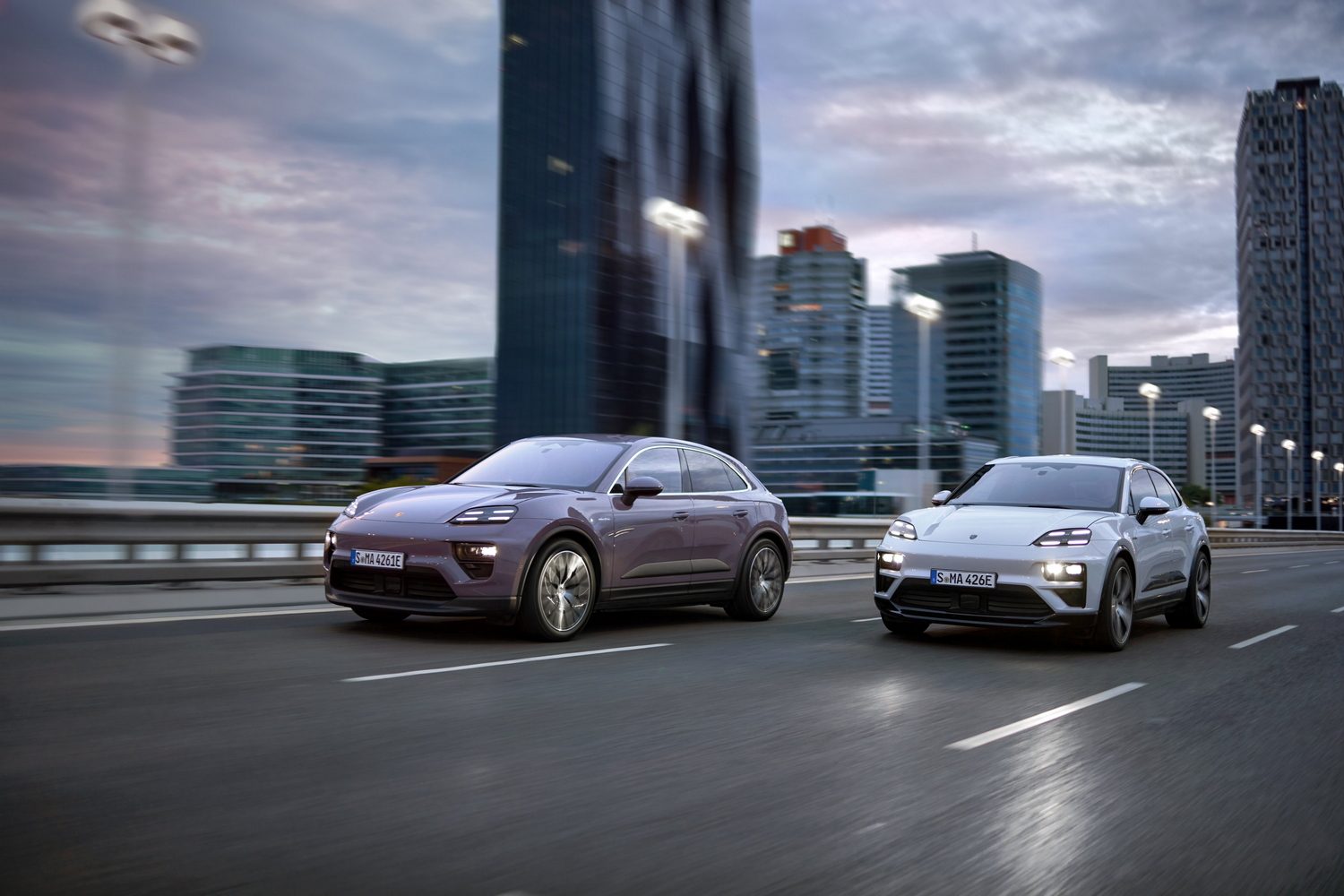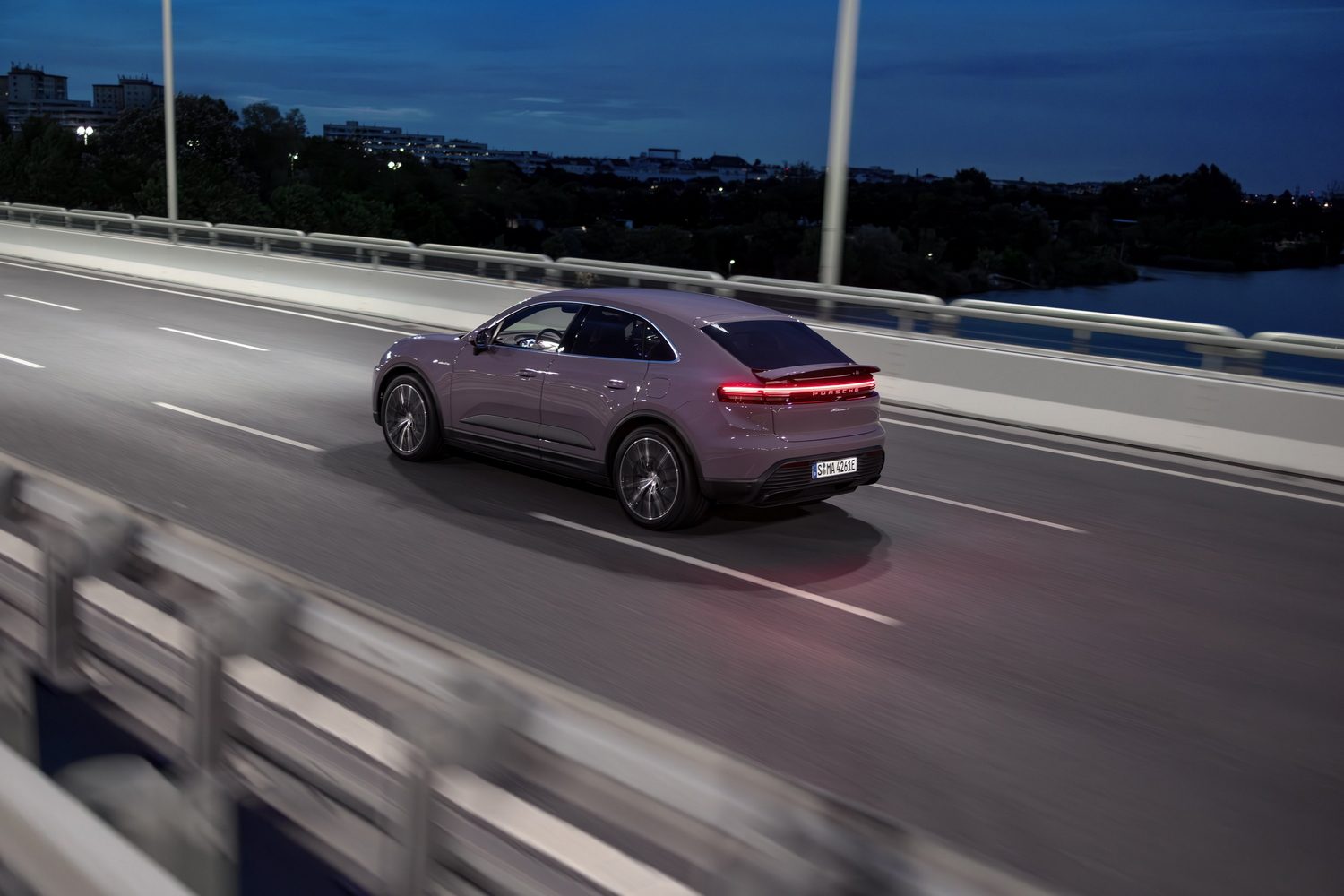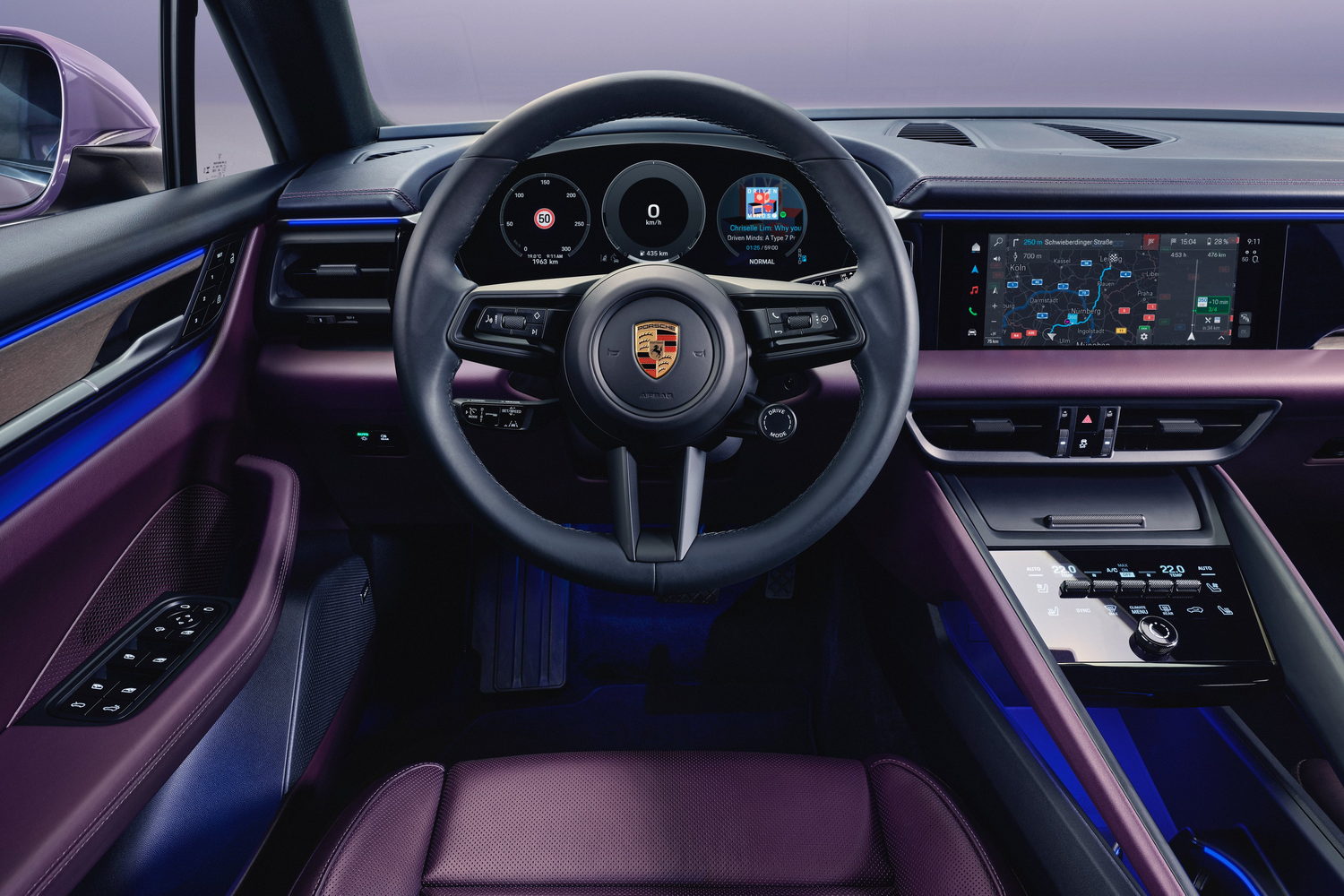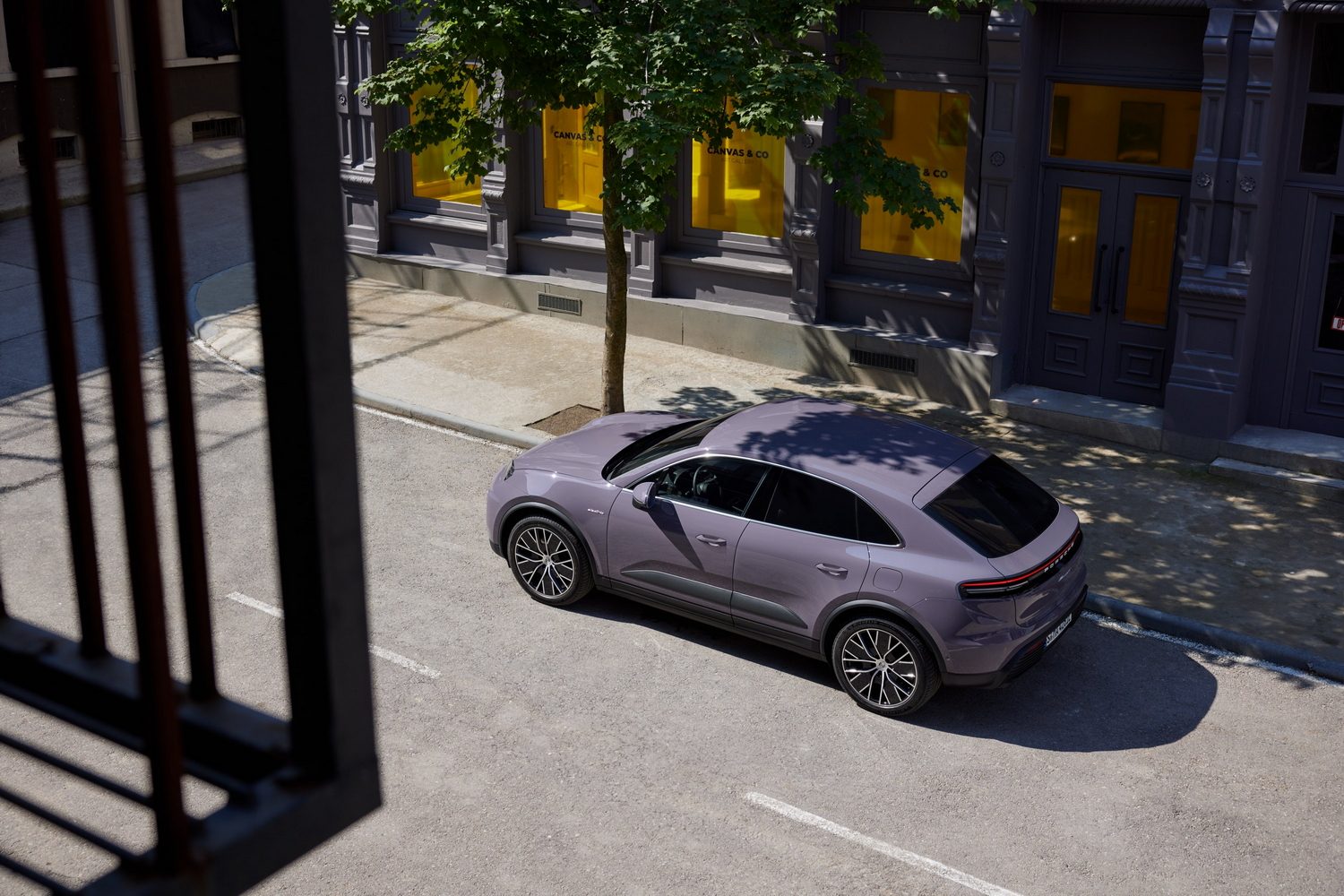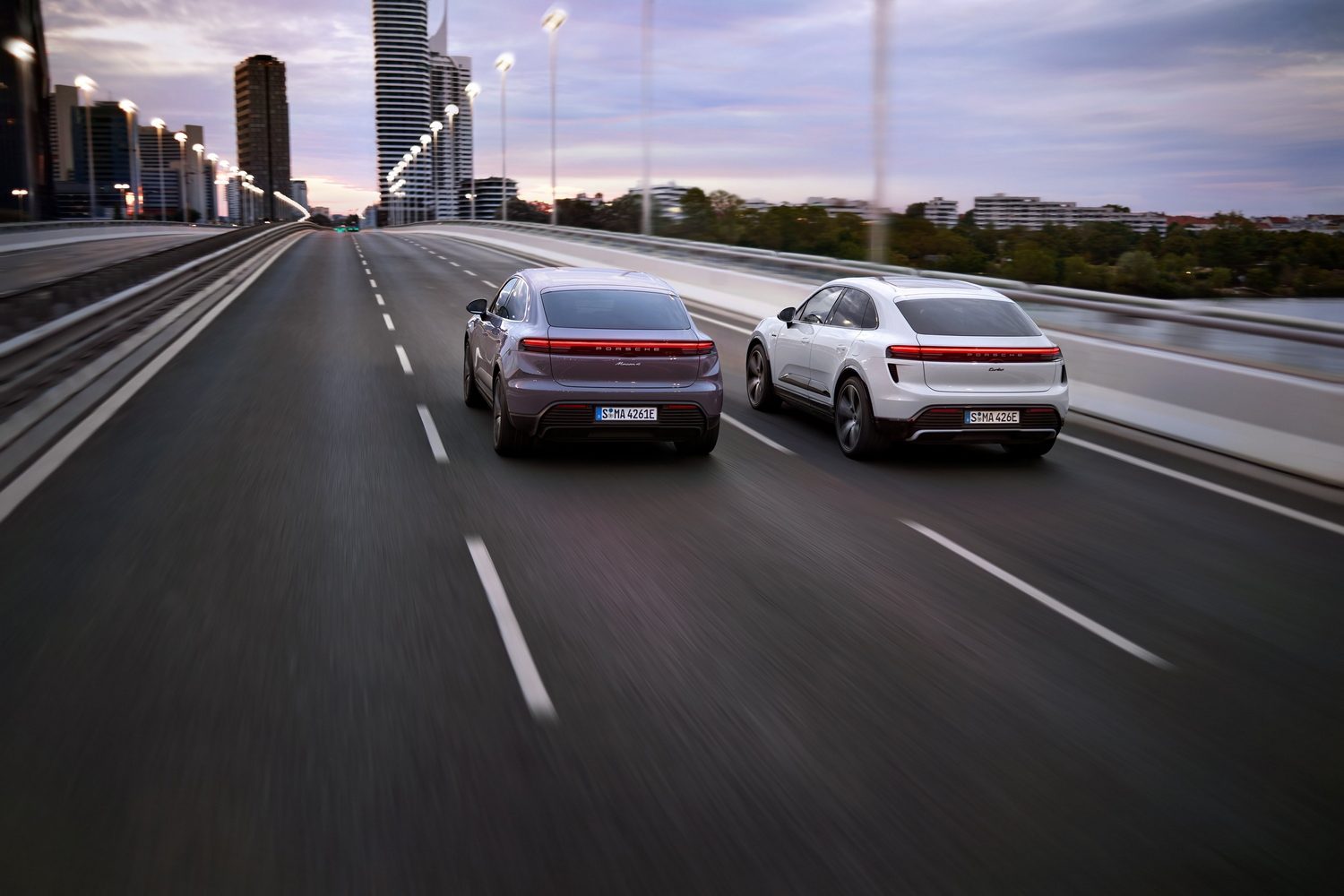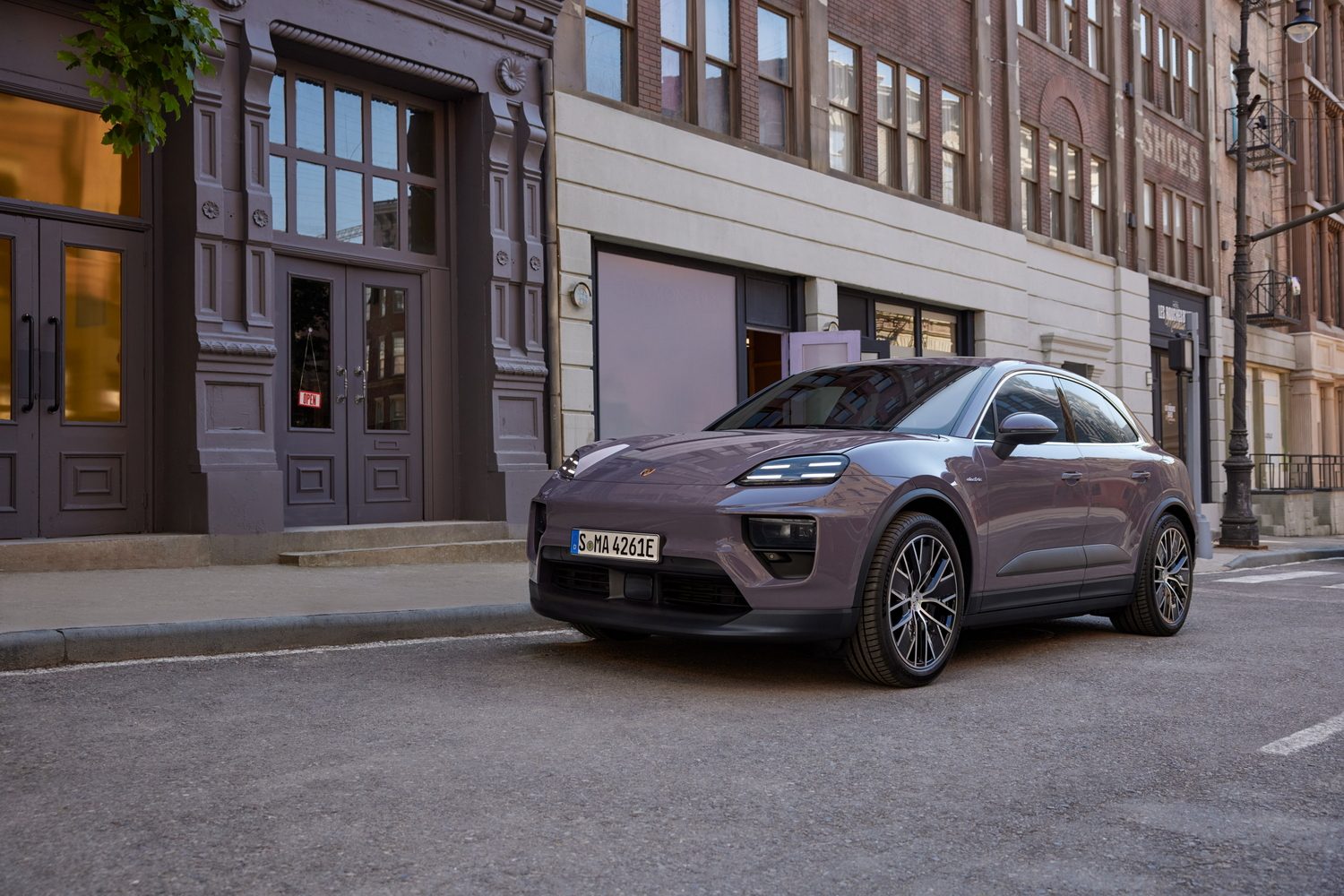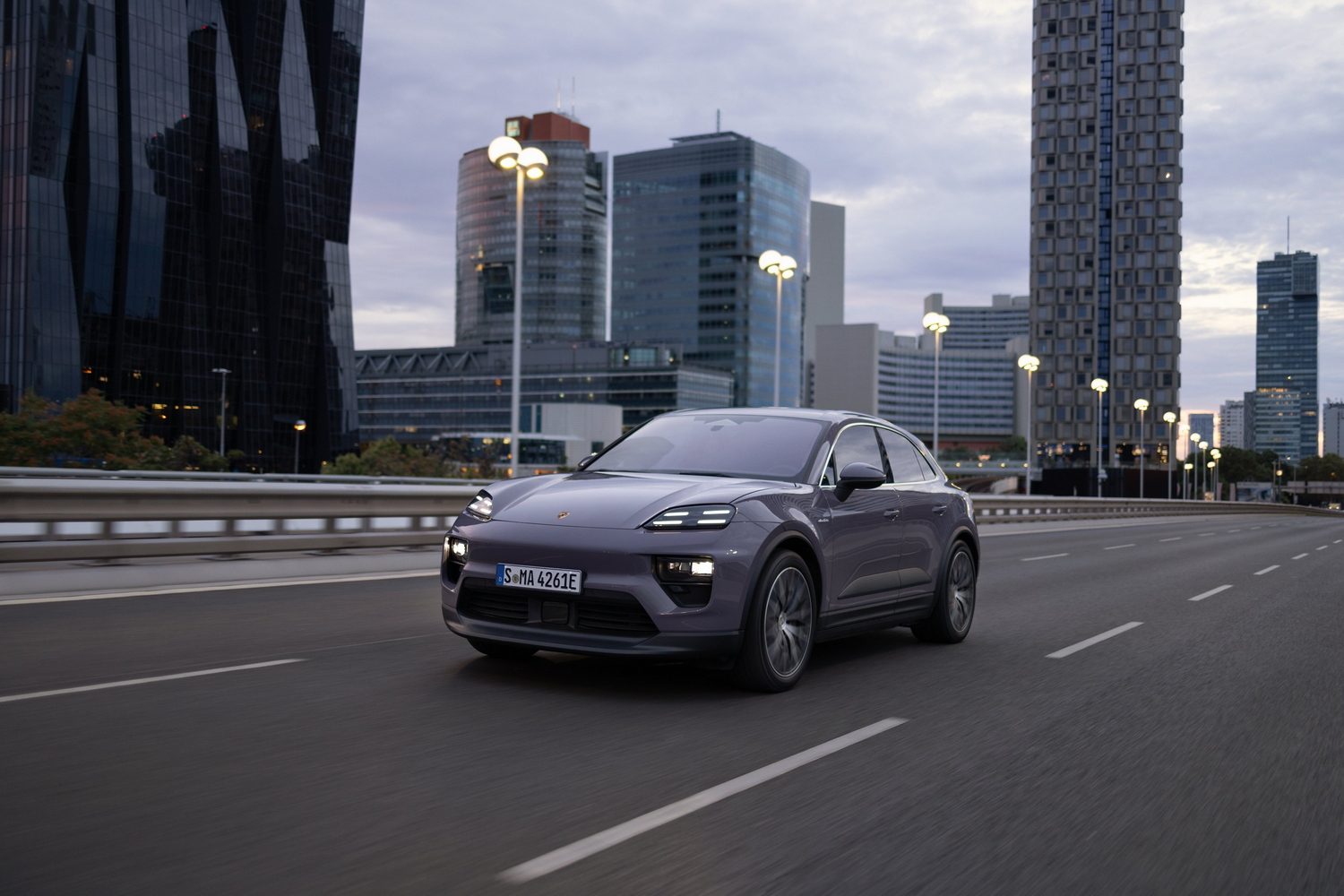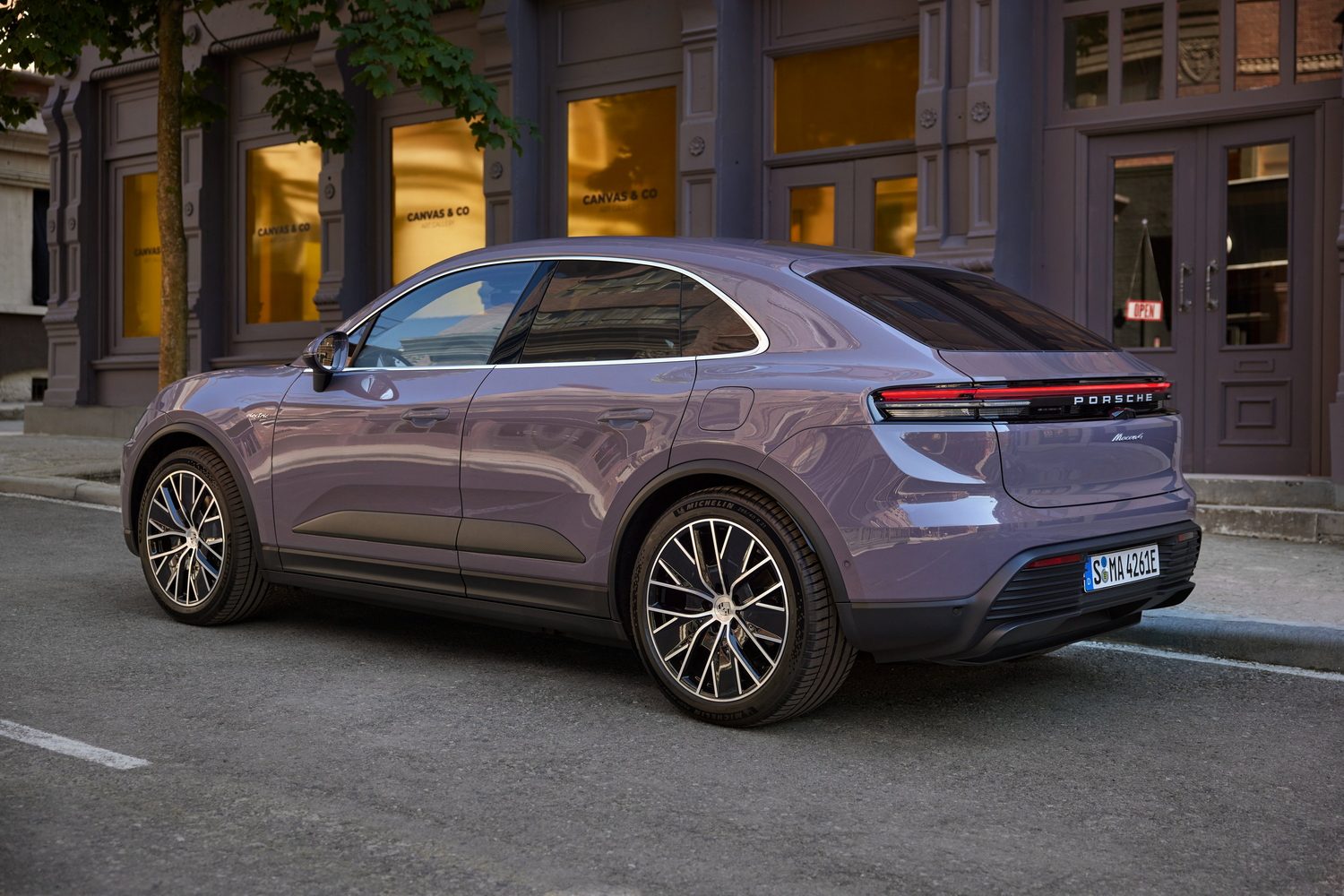Porsche has revealed full details on and images of its all-new, all-electric Macan compact SUV. This zero-emissions vehicle will launch initially in two main specifications, known as the Macan 4 and Macan Turbo, and will have a range of up to 613km to a single charge.
Up to 613km official range
Both new models of Porsche Macan use permanently excited electric motors (PSM) on both axles, giving them four-wheel drive. In the Macan 4, these motors deliver up to 408hp and 650Nm, but in the Turbo those numbers rise considerably, to 639hp and 1,130Nm. That means these electric SUVs are quick: the Macan 4 runs 0-100km/h in 5.1 seconds, while the Turbo trims that time down to a supercar-like 3.3 seconds.
They're almost as fast to recharge, too, thanks to the fact they sit on an all-new electric vehicle (EV) chassis for Porsche, called the Premium Platform Electric (PPE). This allows for 800-volt electrical architecture, as already seen on the German company's first EV, the Taycan, so that the maximum charging speed on the new Macan models is 270kW on DC. This means the 95kWh lithium-ion battery pack (that's the usable energy capacity) can go from 10-80 per cent state of charge in around 21 minutes at its fastest rate.
A clever system even sees the Macan EVs able to effectively 'split' the battery into two 400-volt units, if the public charger is only a 400-volt item, which then means that even without a high-voltage booster, the two halves of the battery can charge at up to 135kW DC. AC charging at up to 11kW is also possible with the new Macan models, while its electric motors can impressively recuperate up to 240kW of energy while driving.
Along with an Integrated Power Box (IPB) - which bundles the onboard AC charging capability, the high-voltage heater and the converter together - all these features allow the zero-emission Porsche EVs to go up to 591km to a single charge as the Macan Turbo and a notable 613km as the Macan 4. Stick to city speeds, and the Macans can go between 765- and 784km to a single charge according to Porsche.
Obvious Taycan influences
Externally, the new Macan's body takes obvious styling cues from the existing Taycan family. Michael Mauer, vice-president of Style Porsche, said: "With the all-electric Macan, we are presenting the first Porsche that we are taking electric from an established product identity. The new Macan is clearly recognisable by its brand identity as part of the Porsche product family.
"The classic Porsche proportions have been further developed and optimally adapted to the challenges of an electric vehicle. This has further heightened the sporty, modern and dynamic appearance of the Macan. The design makes it clear: the Macan remains the sports car in its segment, even in electric form."
The second-generation Macan is slightly bigger in all external dimensions than the model it replaces, while a major bonus is that the wheelbase - the space between the front and rear wheels - has grown by 86mm to 2,893mm overall.
That's usually to the benefit of interior space, meaning rear-seat passengers should have more room to lounge, while the boot is larger than the one on its predecessor too, at 540 litres as opposed to 458 litres previously. Further storage is provided by another 84-litre cargo area under what would ordinarily be referred to as the Macan's bonnet - a 'frunk' if you will.
With its flattened, four-point daytime running lamp (DRL) front light clusters and full-width strip of illumination in a smoothed-off rear end at the back, this is the area where the new Macan most obviously apes the Taycan. However, those apparent 'headlights' mounted up high are only the DRLs; the main LED lights, with optional matrix selective dimming technology, are housed in clusters embedded in what looks like the outer air vents below.
Porsche's designers have obviously striven to give the vehicle a more coupe-like profile when viewed side-on, but that's not just an aesthetic decision. It helps, along with Porsche Active Aerodynamics (PAA), to make the new Macan into what the company describes as "one of the most streamlined SUVs on the market", with a drag coefficient of just 0.25.
Interior heavily digitised
Moving inside, again the Taycan forms the inspiration for the main dashboard layout. Like the current Cayenne and incoming Panamera models, which have both gained the same treatment, the Macan EV has a 12.6-inch curved-screen instrument cluster without an upper cowl. In the middle of the fascia is the familiar 10.9-inch infotainment screen, as well as customers having the option of specifying the 10.9-inch Passenger Display for the first time in the Macan line.
Technology beyond this includes a head-up display with augmented reality technology, which helps with navigation directions and more, while the software powering the Porsche Communication Management (PCM) system is based on Android Automotive OS. It includes voice-assistant control triggered by a 'Hey Porsche' command, as well as the possibility of installing third-party apps into the Macan's set-up.
Passengers in the latest Macan will sit 28mm lower in the front than they did before, and 15mm lower in the rear with increased legroom - as we said, a direct benefit of the lengthened wheelbase. In terms of ergonomics, there are many digital user interfaces up front, but Porsche hasn't dispensed with physical switchgear entirely for the air vents and climate controls.
Like any self-respecting EV, much of the new Macan's construction includes the use of ecological materials, with selected parts of the interior physically demonstrating this environmental outlook.
Dynamic capabilities assured
That low-set seating position should help the electric Macan feel like a 'true' Porsche from behind the wheel, but more has been done to the chassis to sharpen the driving experience further. The electronically controlled Porsche Traction Management (ePTM) all-wheel-drive system, for example, is claimed to operate five times faster than a conventional four-wheel-drive set-up, and it can detect slip from any given wheel and respond within 10 milliseconds.
The Turbo, as the more driver-focused model, also gains Porsche Torque Vectoring Plus (PTV Plus) on its rear axles, which is an electronically controlled differential lock for engaging handling characteristics.
As standard, the Macan 4 will roll on steel springs and fixed-rate dampers, but optionally available will be Porsche Active Suspension Management (PASM) variable shock absorbers, as well as the choice of uprating to full air suspension. The Macan Turbo gains air springs with PASM as standard, and on any car with it fitted, these dampers now have two-valve technology - an upgrade seen recently in the larger Cayenne SUV, where it notably improves the SUV's dynamic abilities.
Another first for the Macan cars will be optional rear-axle steering, which has a maximum steering angle of five degrees, and which can reduce the Porsche SUV's turning circle to a compact 11.1 metres.
And, like any good SUV, the electric Macan will be a sturdy towing vehicle, capable of hauling up to 2,000kg of braked trailer.
Porsche has delivered more than 800,000 examples of the first-gen Macan since it launched in 2014, so this all-electric newcomer has big shoes to fill. Oliver Blume, chairman of Porsche AG's executive board, said: "We are taking the Macan to a completely new level - with exceptional E-Performance, the new Driver Experience, and a very impressive design."

